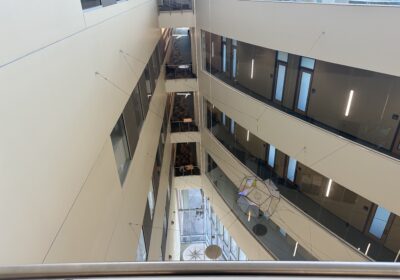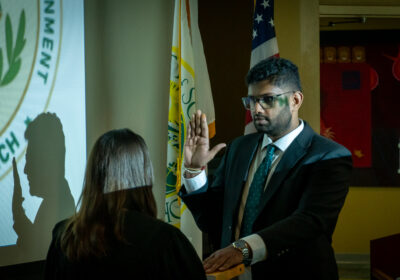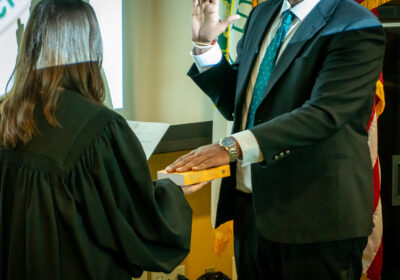Architect speaks on urban renewal
“Make it functional.”
“Make it aesthetically appealing.”
“Make it unique.”
Whatever the command, co-founder and partner of the Boston-based Anmahian Winton Architects, Alex Anmahian makes imagination tangible for his clients.
Using a combination of detail and movement, context and culture, glass and various metal alloys, Anmahian produces innovative structures for his clients, who range from nonprofit organizations in Boston to Eskiehir, Turkey.
Anmahian addressed a group of approximately 75 students, faculty and staff Tuesday evening in the CWY building, reflecting on his previous projects, including a custom-made, 1,000-square-foot observatory for a researcher in New England, built on uneven granite terrain.
Throughout the lecture, he emphasized architects’ abilities to synthesize different materials and ideas. This project, he said, was a synthesis of understanding both “natural geography and human geography,” in addition to adaptability.
Another project he spoke of is one estimated at $48 million — the biggest project his firm has done. The man-made landscape of Turkey, within the span of a few years, has radically transformed, and the project, which tasked his firm with developing a building with a small floor area ratio but large stature, seemed like a prime opportunity, Anmahian said.
“If you thought urban renewal was anything in the U.S., you haven’t seen anything yet,” he said.
The lot sits between two tall buildings, and each level of the building is 12 feet 4 inches tall. The windows will have built-in wooden blinds that react to the sun. The lights in the building’s lobby will be simple single, glass-encased LED lights. The lights, he said, have been strategically designed to reflect the cultural aesthetic of the city — mirroring the lighting of mosques.
To Anmahian, the project in Turkey is more than constructing a building. It’s an opportunity to be a bastion of innovation — the opportunity to “make an urban statement and hope that others will go ‘this is nice.’”
Anmahian said there was a time when he had a bleak outlook on the future of architecture as an art form.
“I was getting very concerned when I was seeing contractors take more and more of what architects did,” he said. “Larger firms were giving (the position) away because of liability issues. I saw others taking away what the architect did.”
Anmahian said his view has changed after witnessing a positive change in the profession.
“I’m very optimistic because I think with the kinds of digital revolution and mass customization,” he said. “It has put more agency in the hands of designers — the way I’d like it to be.”







